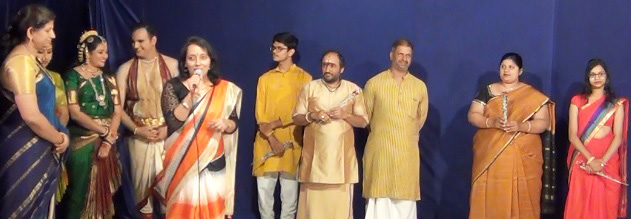Author: Shalini Vittal, Bengaluru Photos by Pooja Balasubramanya
Noopura Bhramari (R.), Kalagowri & Mayuri Nrityasala, Bengaluru presented “Bharata Manoratha”, a half-day event on Dance, Dance History and Research, and Performances. The prime objective of the event was on the thoughts of Bharatamuni of Natyashastra and contemporary art field. It was on 3rd feb, 2019, at Kalagowri Auditorium, Basavangudi Bangalore, from 3.00- 9.00 PM.
The event opened with a Panel Discussion- ‘Kala samvada’ on “Music for Dance”, and “Recent trends in Dance Research and performances” moderated by Dr. Manorama BN (Dance Researcher, Historian and Scholar). Multilingual Scholar Shatavadhani Dr R Ganesh, dance scholars -Dr Shobha Shashikumar, Dr Dwaritha Vishwanath, Dr Padmaja Suresh and Shalini Vittal, poets and scholars- Korgi Shankaranaryana Upadhyaya, Arjun Bharadhwaj, Hari Ravikumar, and many students, artistes, scholars were participated and openly shared the thoughts and opinions.
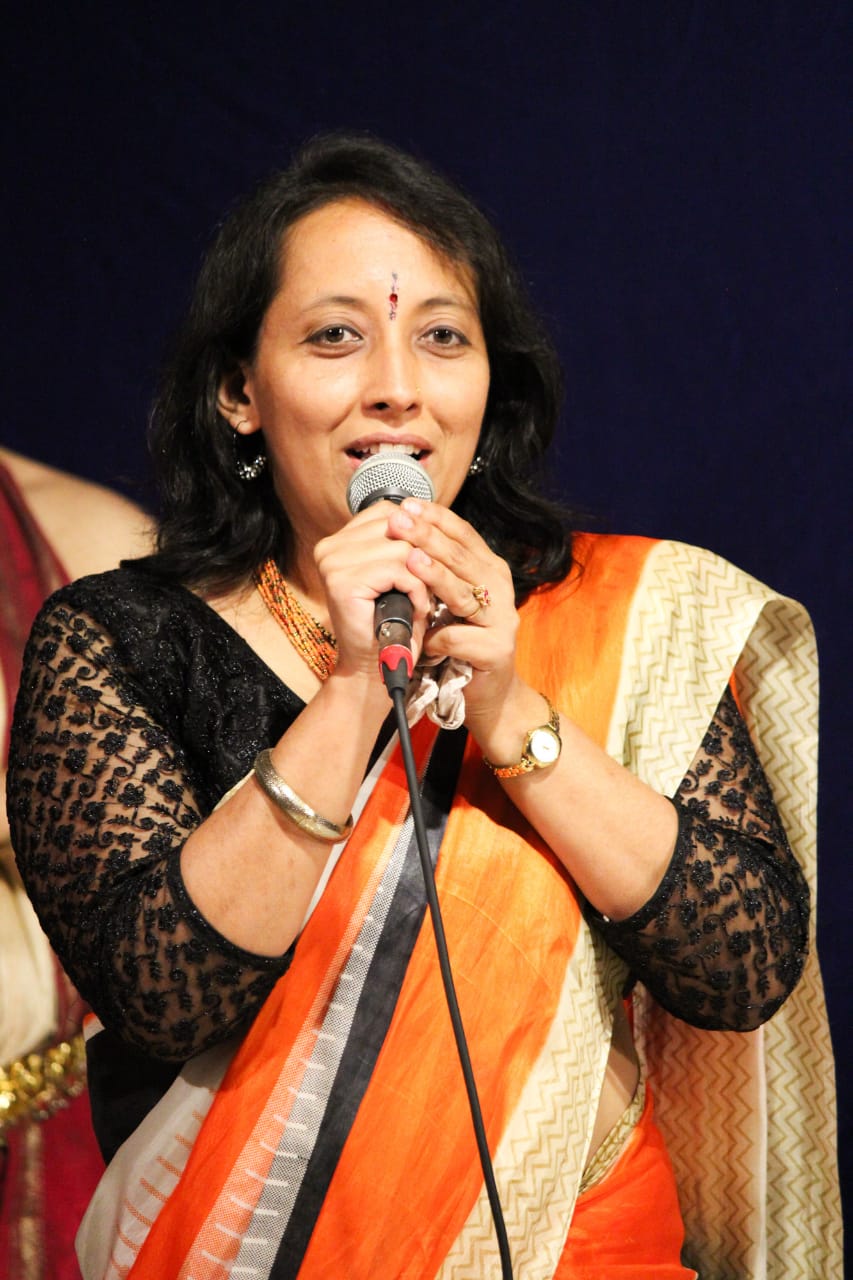
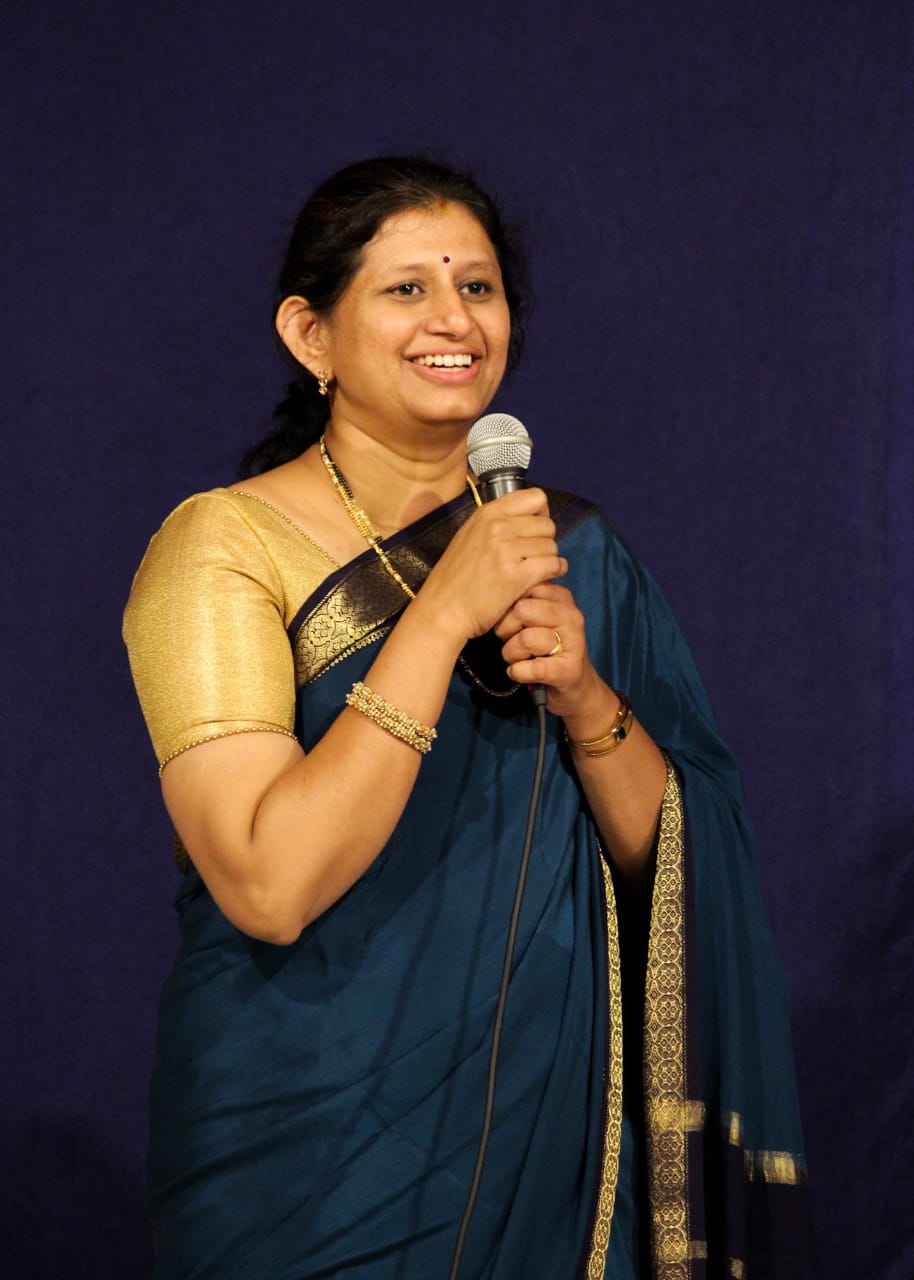
The evening witnessed solo dance recitals by three Bharatanritya disciples of Natyabharati Dr Shobha Shashikumar as a part of the “Natyasastra Karana Padavi” certification by NoopuraBhramari and Mayuri Nrithyashala. Smt Anuradha Lokesh, Sri Arun Sreenivasan and Smt Madhulika Srivatsa presented their research-based choreographies in the presence of an august gathering.
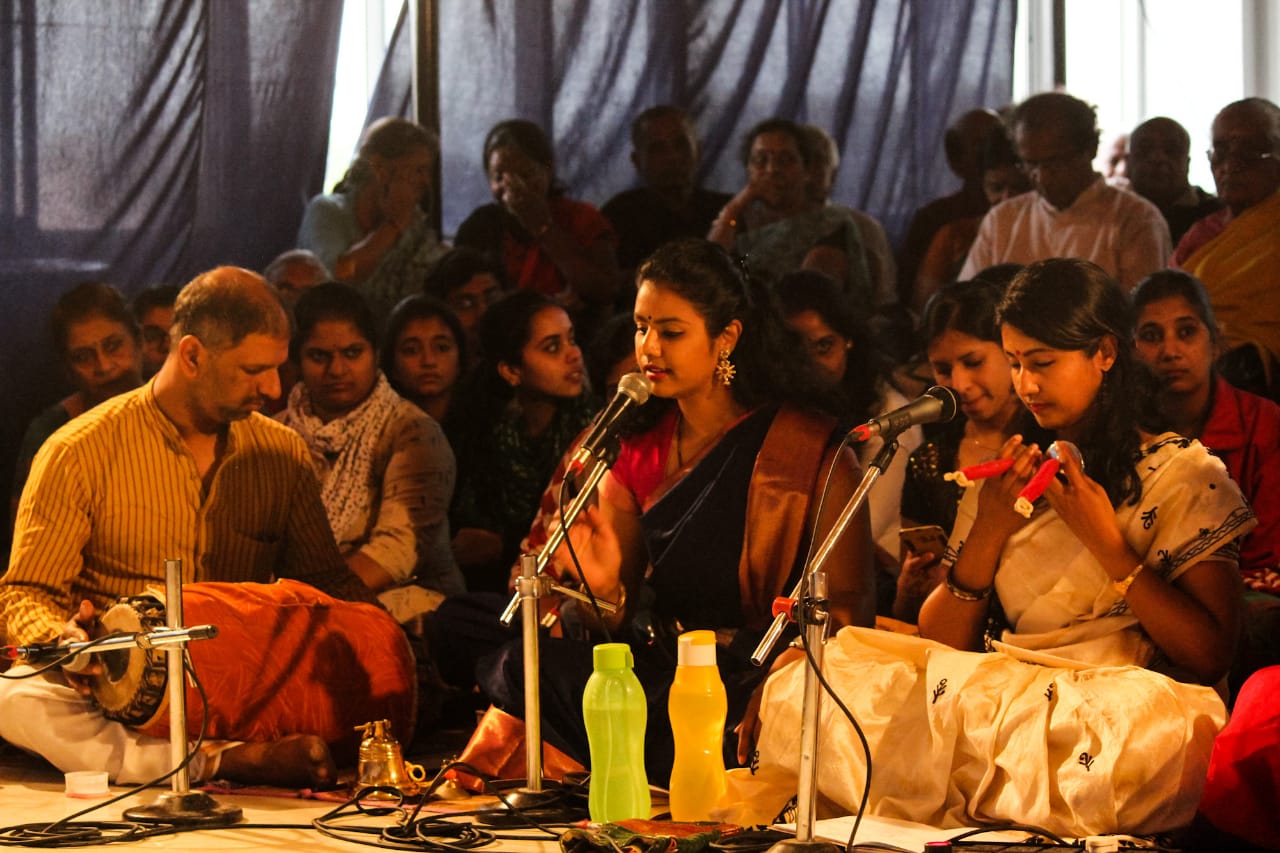
The music ensemble accompanying the dancers included Kum Madanika Manjunath and Kum Nagashree Narayan on the Vocal, Vid Srihari Rangaswamy on the Mridanga, Smt Sangeeta Iyer and Smt Megha Srinivas on the Nattuvangam and Vid Mahesha Swamy and Chi M.S.Pramukh on the flute. Kirthana Ganesh has compeered the dance recital.
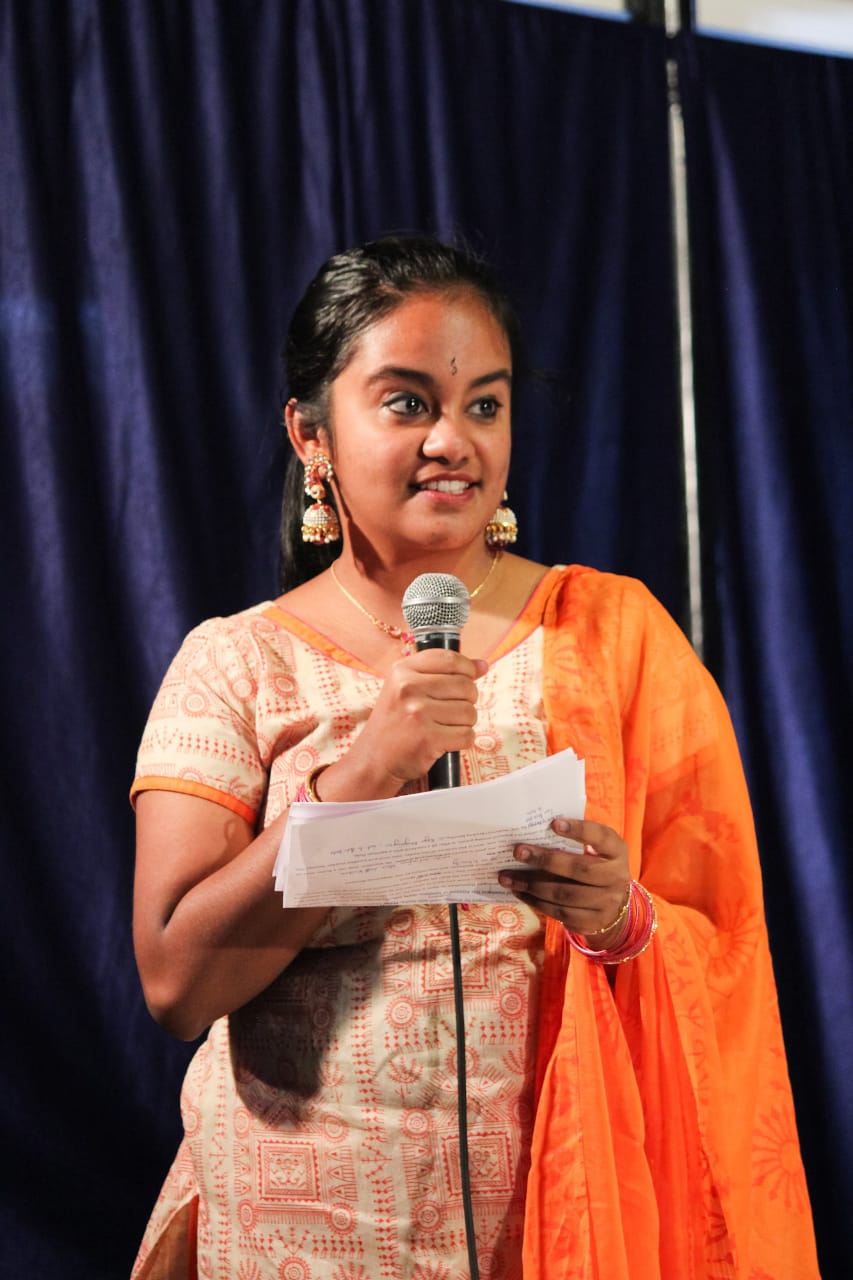
The first piece was a Pushpanjali performed by Smt Madhulika Srivatsa set to Gaula raga, Adi tala and composed by Madurai R Muralidharan. It was presented as a traditional opening number where offerings of flowers and obeisance was made to the deities, gurus, accompanying artistes and the sahrdayas. The technical aspects of the dance form were duly explored in this piece whilst using Adavus, Charis, Nrtta hastas and Karanas, in the framework of the musical structure available through the song.
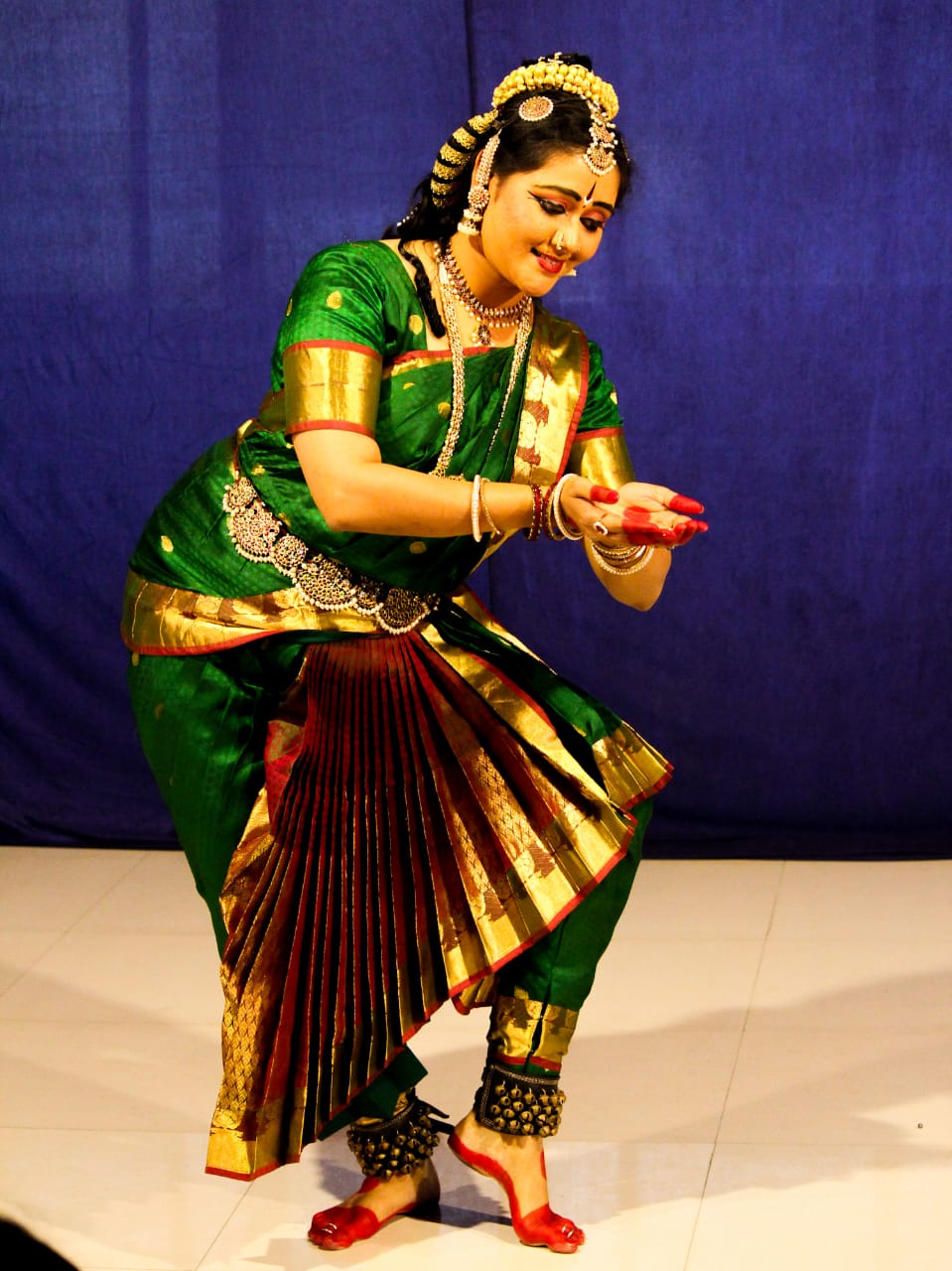
This was followed by a Ganesha kriti of Sri Muttuswamy Dikshitar in raga Vegavaahini and Adi tala performed by Smt Anuradha Lokesh. In simple yet beautiful Sanskrit, the poet has described Lord Ganesha as sureshvara, ganeshvara and vighneshvara. Along with presenting the actual descriptions through the song and a lively nrtta in the chittesvara, the artiste interestingly began with a description of a typical Ganesha puja vidhi from making the idol of Lord Ganesha in soil and worshipping the deity with flowers, modaka and coconut offerings, mangala aarati and prayers. Suitable dance elements from the Natyasastra were included to describe the elephantine movements.
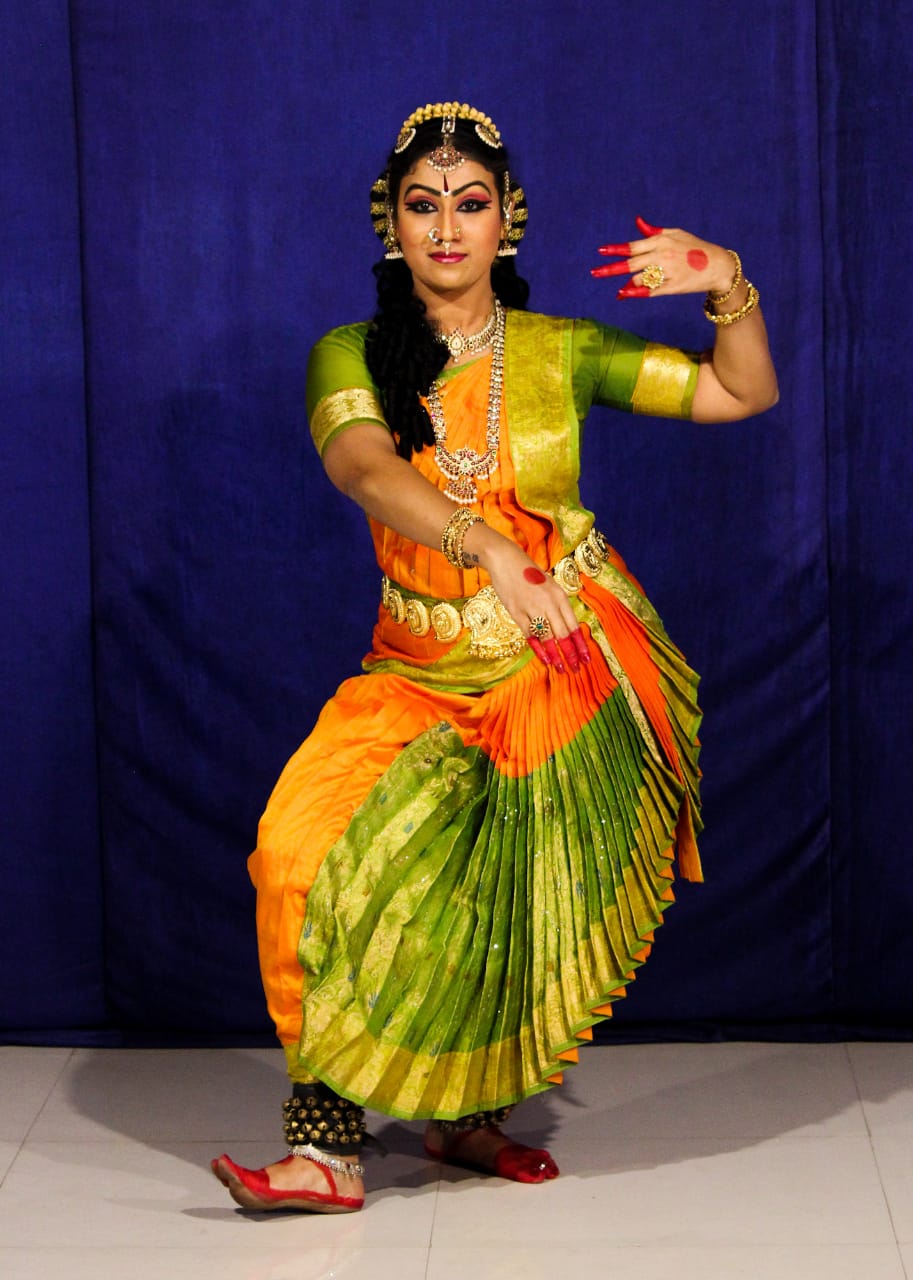
Smt Madhulika went on to present a composition of Kannada litterateur D.V.Gundappa titled Hoovu (“ಹೂ” ) from his poetry collection of Ketakivana, set to a variety of ragas and talas. The music composition was done by Vid.Balasubramanya Sharma and inputs from Kum.Madanika Manjunath were also incorporated. This poem talked about the various aspects of creation with special emphasis on a Flower. While the creator of the universe brings many parts of nature to life, such as Mountains, Oceans, Forests, Clouds, Animals, Birds, Insects and even Human beings, he finds it to be incomplete; finally, when he sees a flower bloom, he rejoices! The artiste made a detailed attempt to give a picture of creation of Bhuloka, from the time Lord Narayana lying in the pralaya jala manifests the Hiranyagarbha which houses Lord Brahma, who along with many other gods such as Shiva, Indra, Varuna, Vayu and Chandra create the world under the direction of Lord Narayana. Creative liberty was taken to depict how the different gods created the various facets of nature. The creation of each aspect was associated with a particular deity and suitable use of Natyasastra angika and their adaptations were incorporated. When Lord Narayana finally examines the creation, he finds every incidental creation to be inadequate. An accidental blossoming of a flower brings immense joy to him as he realises how innocent and flawless a flower actually is. The Lord embracing the flower into his own being was beautifully portrayed! The composition concluded with providing a few metaphorical possibilities of why a Flower is so special.
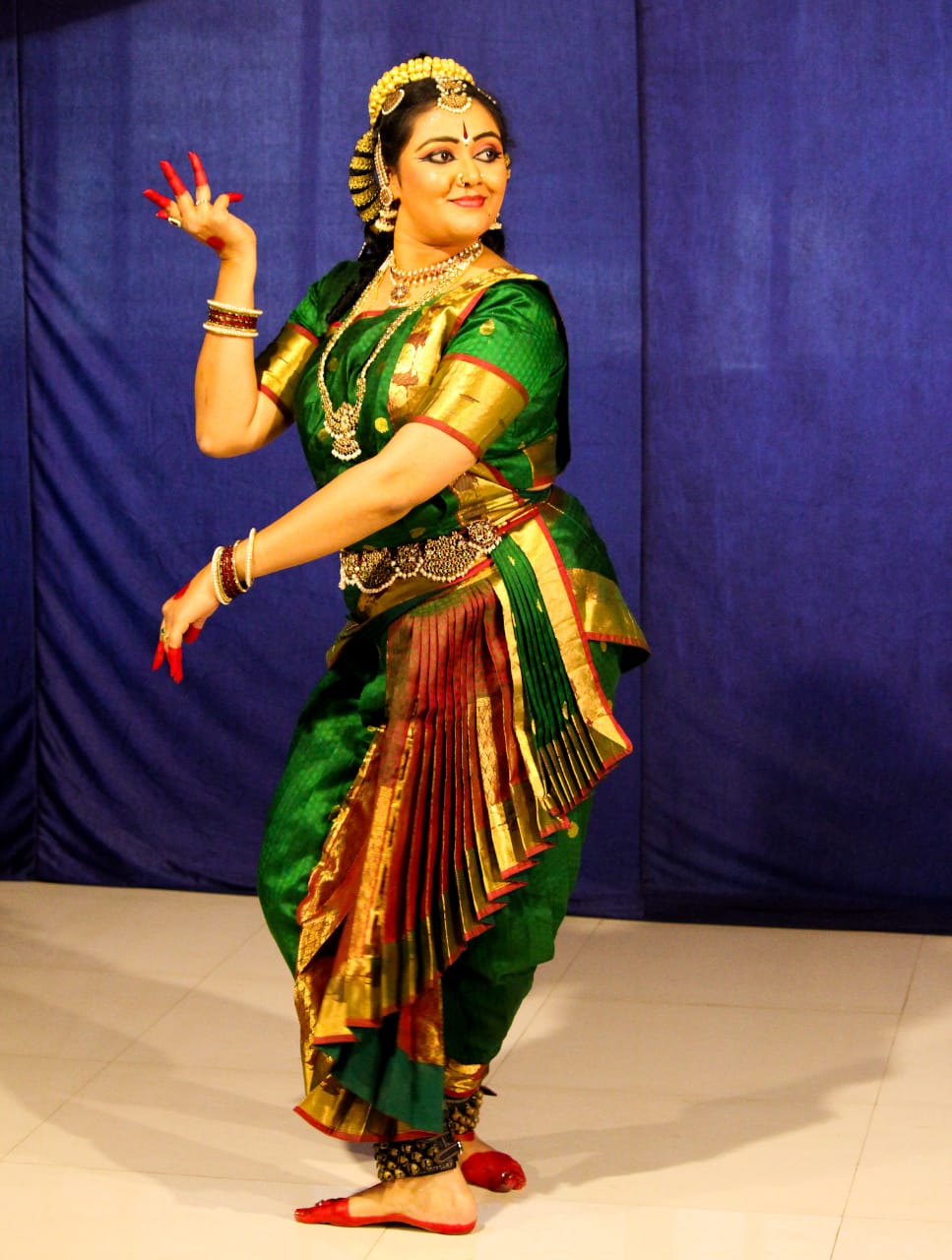
Smt Anuradha then presented a Shringara Padam in raga Shahana and Khandachapu tala, a composition of Dr Manorama B.N. The Padam was based on Mugdha nayika who is none other than Sita, the heroine of the epic Ramayana. The composition beautifully explores the various Vyabhicari bhavas this young and innocent Sita experiences as she sees Rama, the son of King Dasharatha, for the very first time! The artiste began with an incident where Sita who is joyfully plucking Jasmine flowers in her balcony garden is unable to reach some of the flowers that were high up on the trees; she then remembers the Shiva Dhanush and uses it to bring down the flowers with remarkable easy and innocently tosses it aside! Watching this, an absolutely astound King Janaka then decides that only a man who can wield the mighty bow of Shiva will wed Sita! Sita, now along with her sakhis, makes a ball out of the flowers and the girls playfully enjoy their game; the music here was set with solkattus being recited and sung suitably. As the ball drops off the balcony, Sita begins to look for it and in this moment spots the handsome Rama! As the composition progressed the artiste described the beauty of Rama in very many ways while wondering if such a charm was possible by anyone other than Lord Narayana who must have come down to the earth as this handsome man. As Sita wonders if it is even possible for a man of such charm and delicacy to wield the weapons like the Kshatriya prince that he is, the artiste chose to describe the Vira of Rama as perceived in Sita’s imagination using the Lalita sanchara Mandala described in the Natyasastra. This Mandala included the following Caris – Suchi, Apakrantha, Parshvakrantha, Suchi and Bhramari, continuing with Parshvakrantha, Atikranta and finishing with Bhramari. Sita then wonders if she would be fortunate enough to wed this man and drifts off into imagining her wedding with him. We then find Rama coming across the fallen flower ball and as he looks around to return it, their eyes meet for the very first time! Lost in that elongated moment of blissful union of the innocent gazes, Sita gets perplexed with everything she is experiencing as Rama walks away. The sakhis console her that if she worships Goddess Gauri, her desire will definitely be fulfilled and she duly obeys… The apparent accidental meeting of Sita and Rama is woven around as a play of destiny through this lovely composition.
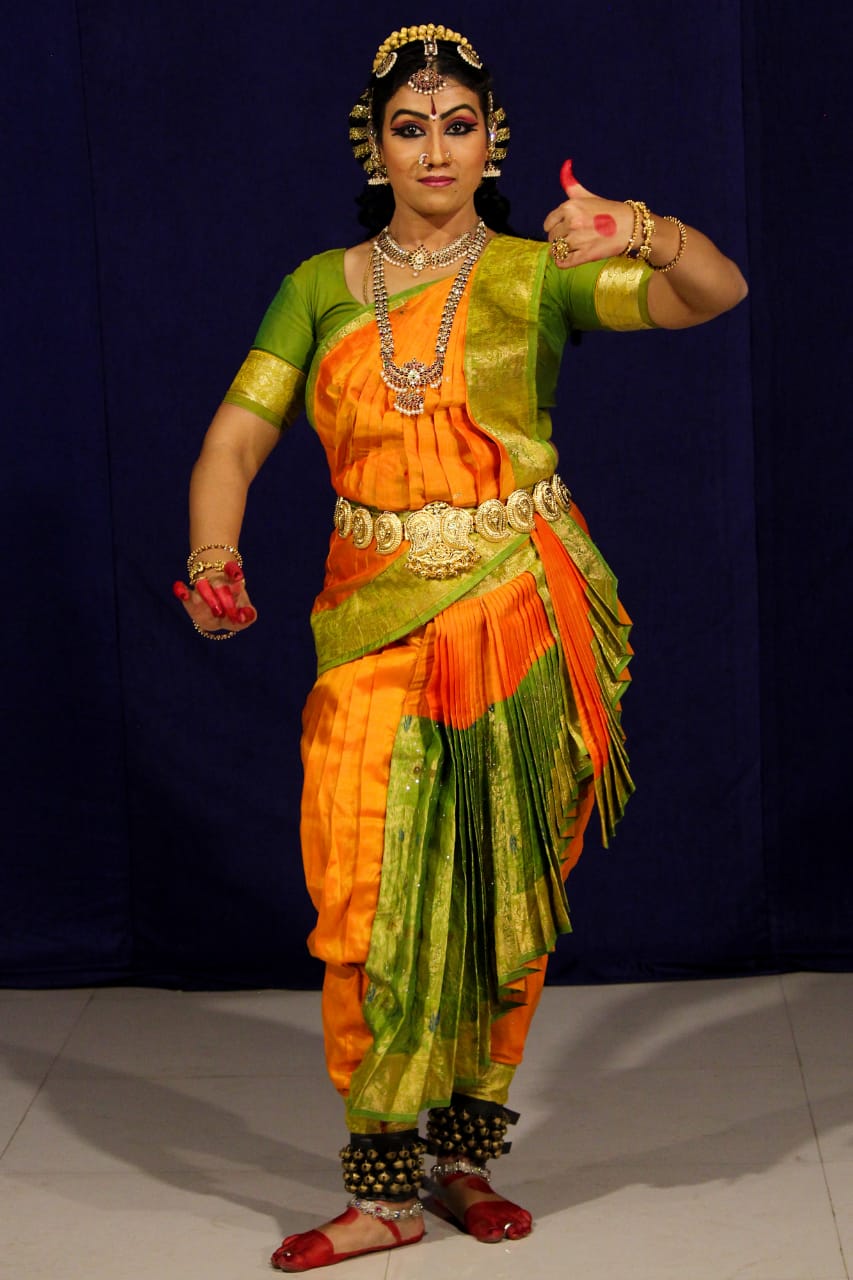
Arun Sreenivasan began his performance with an Aṣṭapadi- set to Miśra Jog. The plot was Kṛṣna wants to make up for his mistake for not arriving the previous evening, as promised to Rādha. With the help of the Sakhi, Kṛṣna has arranged for another meet with Rādha. Finally Rādha arrives on the full moon evening at the decided place of meet and this Aṣṭapadi of Jayadeva, starts with this background.
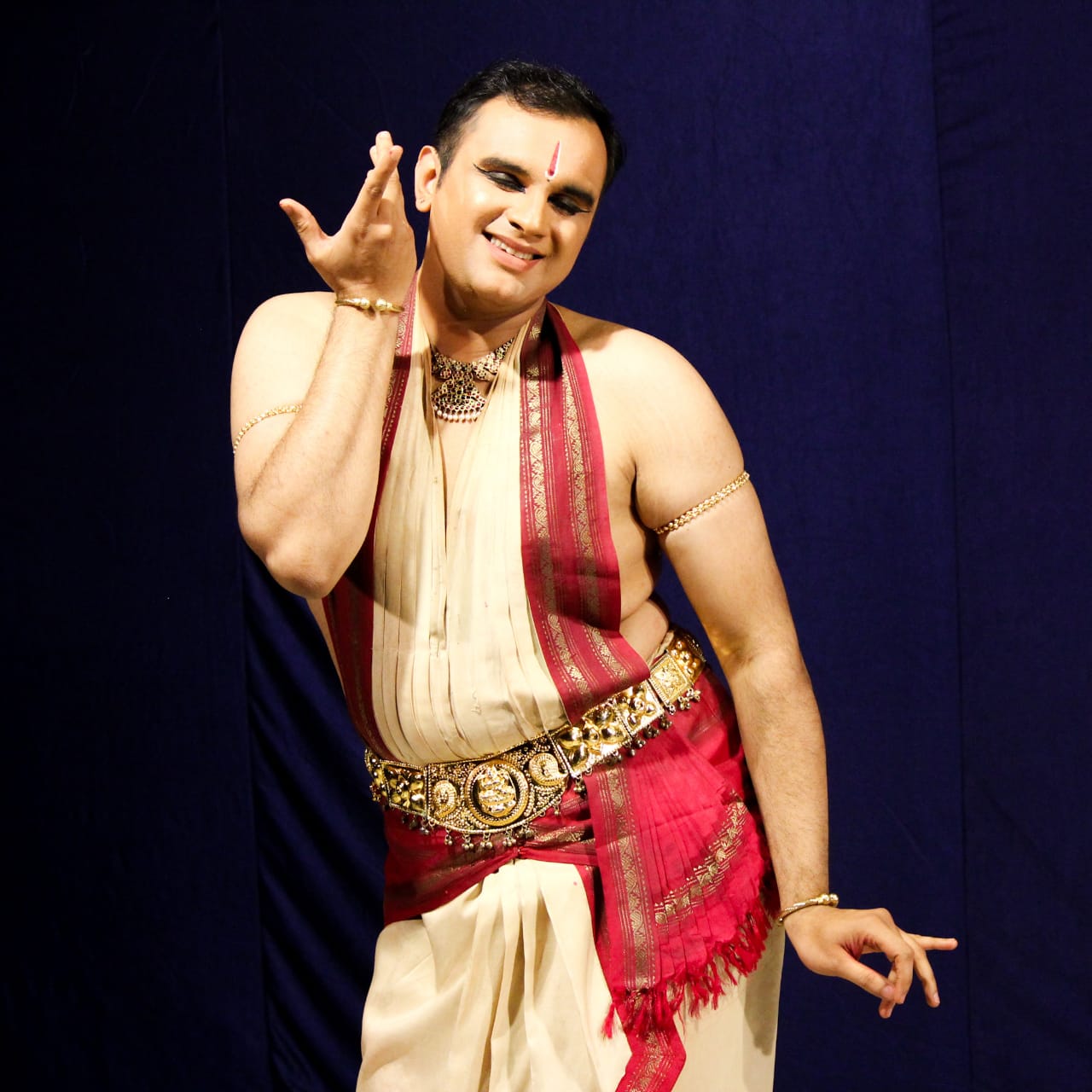
The entire Aṣṭapadi is about Kṛṣna pacifying the Rādha who is as eager Kṛṣna but pretends to be shy. Kṛṣna is Virahi; however he is tries to hide away his pain by trying to pacify Rādha, who is only pretending to be angry with him (but secretly wants to embrace him as much as Kṛṣna wants to- this particular verse has not been taken).
The presence of Śleṣā’s throughout the composition has added to the variety in interpretation as Āṅgika. Hence, the Āṅgika was made Natyadharmi in order to bring out the exoticism. The major challenge of this item was however to decide the Tāla for it to be composed in. however, Khaṇḍa C̣hāpu was ‘brought in’ at certain important places- major during the end of each couplet.
The Aṣṭapadi was tuned by Mr. Ganesh Radhesan (as found on his SoundCloud page on the internet) and improvised by Vid. Nagashree Narayan with important suggestions from Vid. Tirumale Srinivas and Vid. Mahesha Swamy.
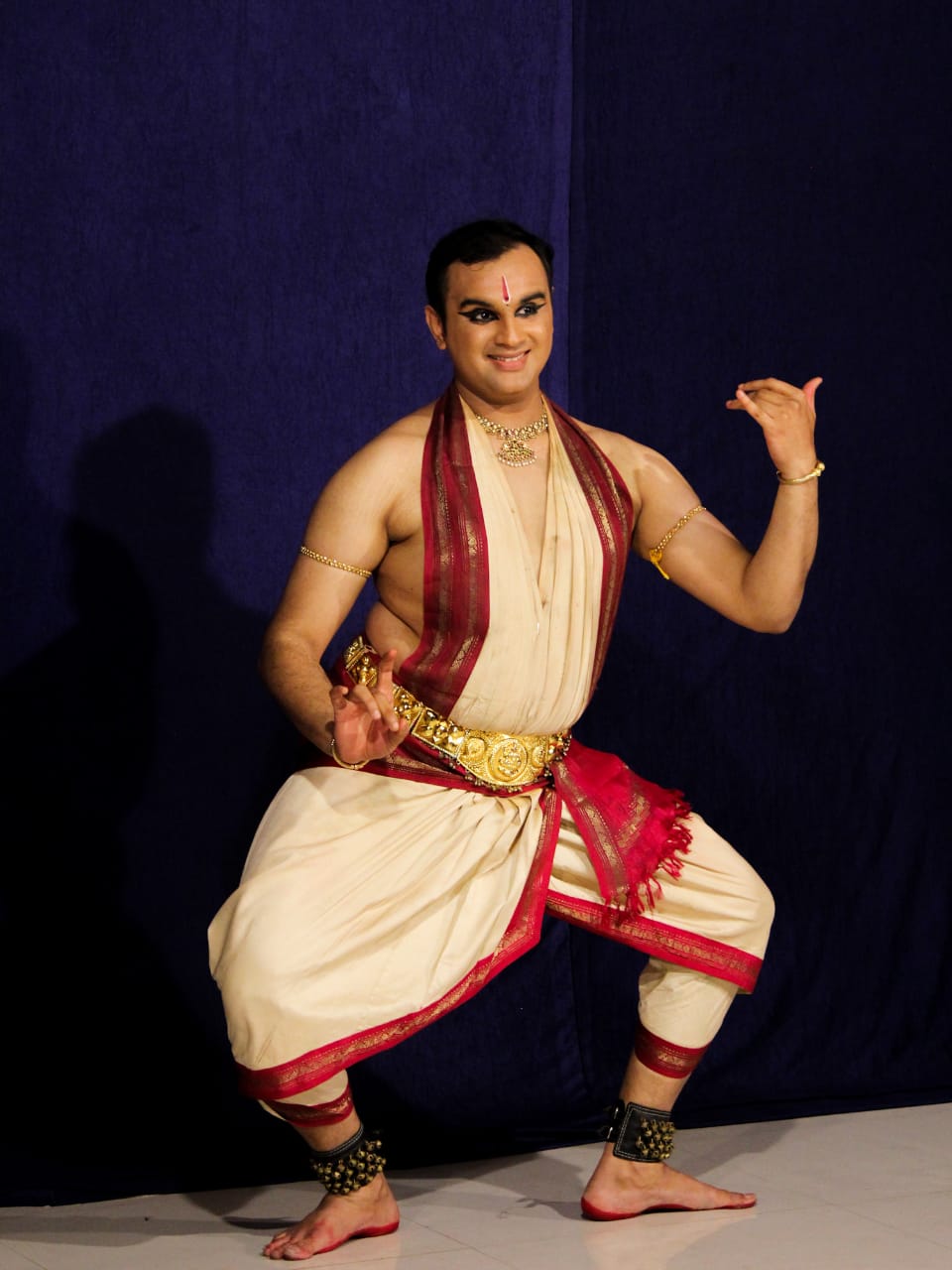
Devi Sthuti which was set to Rāgamālikā set to Ādi Tāḷa was the next piece by Arun Shrinivasan. It was a compilation of the selected two verses from Śāradābhujaṅga Stotra of Ādi Śaṇkarāc̣ārya. The context of this Sthuti was that of a Bhakta describing Devi (essentially the Sarasvati Svarūpa). To this mother who is, ever smiling and bejewelled with precious jewels including the auspicious ruby and flowers, holds the Vīna, Akśamāla, Jñānamudra and a pot of knowledge nectar in her hands. The Bhakta says, Oh mother, please bestow me with knowledge, victory and courage to win over my fears and surrenders completely. To describe the beautifully decorated forehead with the jewels, Ulbaṇa-Alapallava, Rec̣ita Nṛtta Hasta’s, Baddhā, Sthitāvarta C̣ārī’s, Pṛsṭasvastikam, Niśumbitam Karaṇa’s were used; for the depiction of- ‘the one who enjoys good music, the use of C̣aturam and Āvartam Karaṇa; for the depiction of ‘the one who is the preceptor of Vāk and awake to Arts’ the use of Ardharec̣itam Karaṇa, Talamukha Nṛttahasta were handy along with the use of Muktāya Aḍavu. The verses of Śāradābhujaṅga are beautifully woven as Śabdālamkāra’s by Ādi Śaṇkarāc̣ārya. Although there are many suggestions in the verses to be interpreted as Lakṣaṇāvṛtti, they have been retained as Abbidhāvṛtti since the purpose of the item was an opening piece. The Śabdālamkāra’s were handled through use of Nṛtta Hastas, C̣ārī’s, combination of Sthānaka’s along with the footwork technique of the Aḍavu system, more than the incorporation of the actual Karaṇa’s. Use of svarā korvai to bifurcate between two verses, with the incorporation of Aḍavu and Karaṇa has been made. The music has been composed by Vid. Nagashree Narayan in Dharmāvati and Kharaharapriya rāgas.
This was also followed by a short Puṣpānjalī in Nāṭa Rāga with the incorporation of the eight Aṅgahāra from Natyasastra called Aparājitaḥ, which includes the Karaṇas- Danḍapāda, Vyamsitam, Prasarpitam, Nikuṭṭam, Ardhanikuṭṭam, Uromaṇḍalam, Karihastam and Kaṭic̣chinnam, in the particular order was performed. Since the Āṅgika was already specified in the Nāṭyaśāstra, the Tāḷa and the Śollukaṭṭu’s (of Bharatanāṭya) was worked backwards, making it to fit to the Tāḷa of the Puṣpānjalī.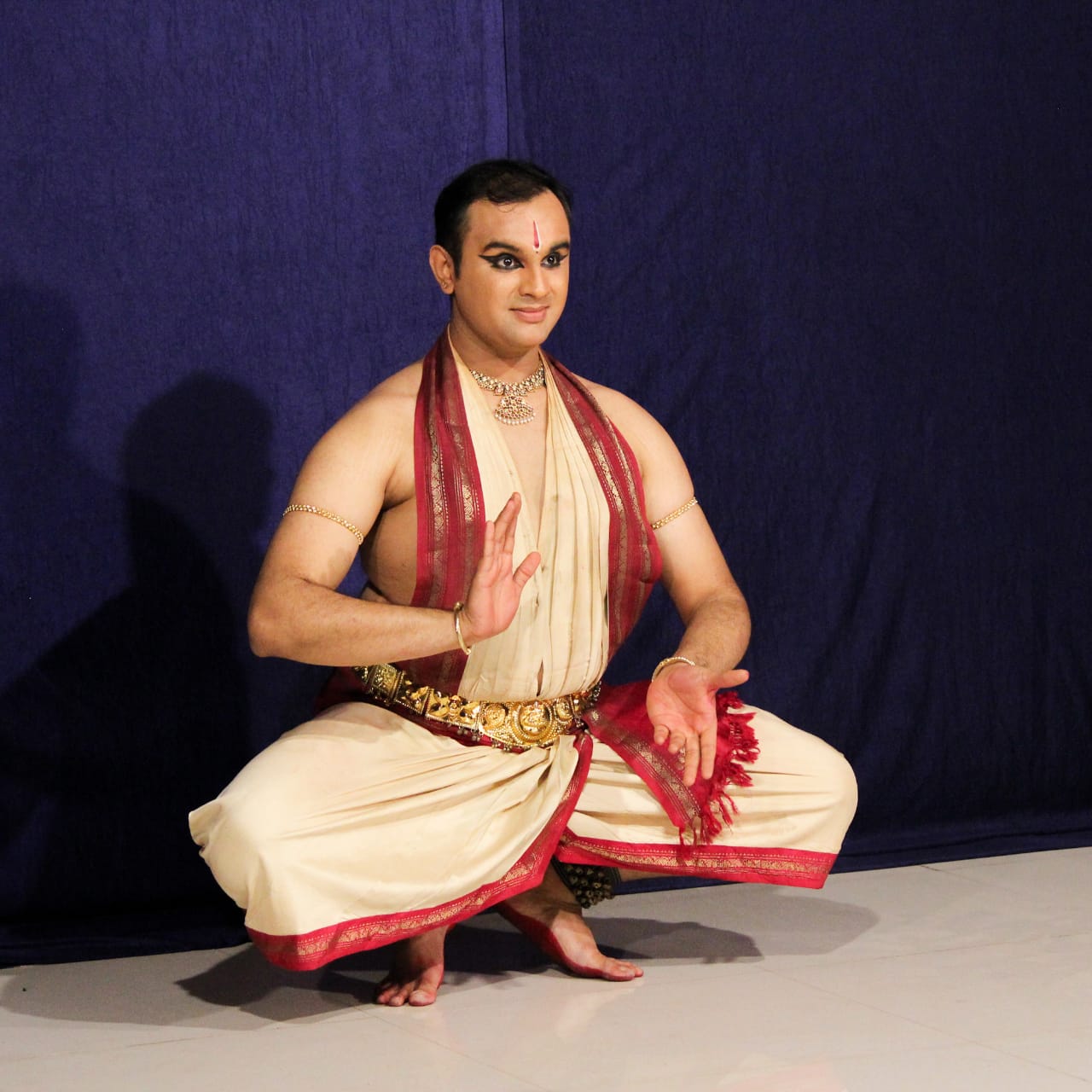
Smt Madhulika concluded her performance with the popular composition of Adi Shankaracharya, Bhaja Govindam and. Set to Adi tala and in Ragamalika. This is composition by the great acharya is like a poetic summary of the teachings in the Bhagavad-Gita that are easily relatable to everyone. While innumerable anecdotes and life lessons are provided in the many verses written by him and his disciples as well, a few were chosen for dance presentation. The concept of worshipping Govinda was thoughtfully touched upon from the angle of Navavidha bhakti (shravana, kirtana, smarana, archana, padasevana, dasya, sakhya, atmanivedana). The power of Time over a rich man’s arrogance was elaborated by the artiste; the humorous portrayal of him flaunting his wealth complemented the pitiable state that he was left at once Kaala showed its supremacy by way of a natural disaster. As the composition progressed, the four paths discussed in it were delineated as Yoga, Bhoga, Sanga and Sangavihina which saw the portrayal of yogic practices, enjoying good food, a woman devoted to her family and a sanyasi respectively, each dwelling in a form of divinity comprehendible to them through their choice of lifestyle; yet all having the potential of experiencing Ananda! The artiste then touched upon the concept of how a Guru can be any personification who helps clear the path of ajnana in the disciple with the light of jnana. A metaphorical meaning how, when the testing time is near, basic knowledge of a subject would not suffice and requires one to dwell deeper was connected to a personal experience of a dancer’s journey as he/she would be working with the angika and sattvika concepts. The piece aptly concluded with repetitive chanting of ‘govinda’.
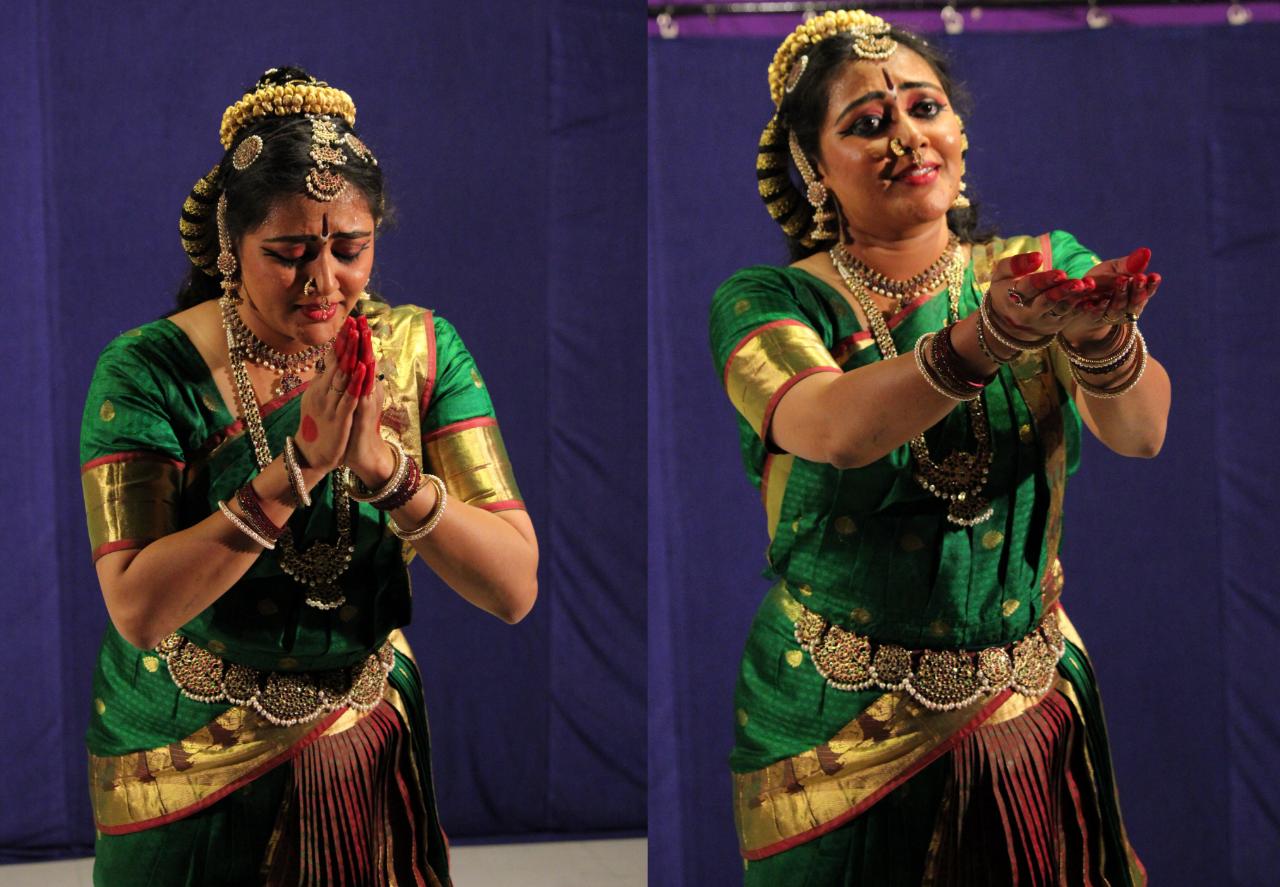
Smt Anuradha concluded her performance with a Thillana in Kadanakutuhala raga and Adi tala. This lively composition of Dr Balamuralikrishna was given a thematic approach. Radha who is thrilled at the prospect of meeting Krishna is seen happily dancing through the Pallavi of the thillana. On hearing his melodious flute call, she realises she is getting late and quickly decks herself up and rushes to meet him. This section was creatively adopted to the quick pace of the Anupallavi thus matching Radha’s manovega. The sahitya of the Thillana was expressed as Radha momentarily forgetting her hurry and recollecting the beautiful form of Krishna, following which she feels the arrows of Manmatha pulling her towards Krishna. Although feigning anger towards Krishna, she finds herself drawn to his mesmerizing flute music and the two enjoy joyous moments of togetherness. Graceful use of Charis, Karanas and Adavus was witnessed in this thematic approach to the thillana.
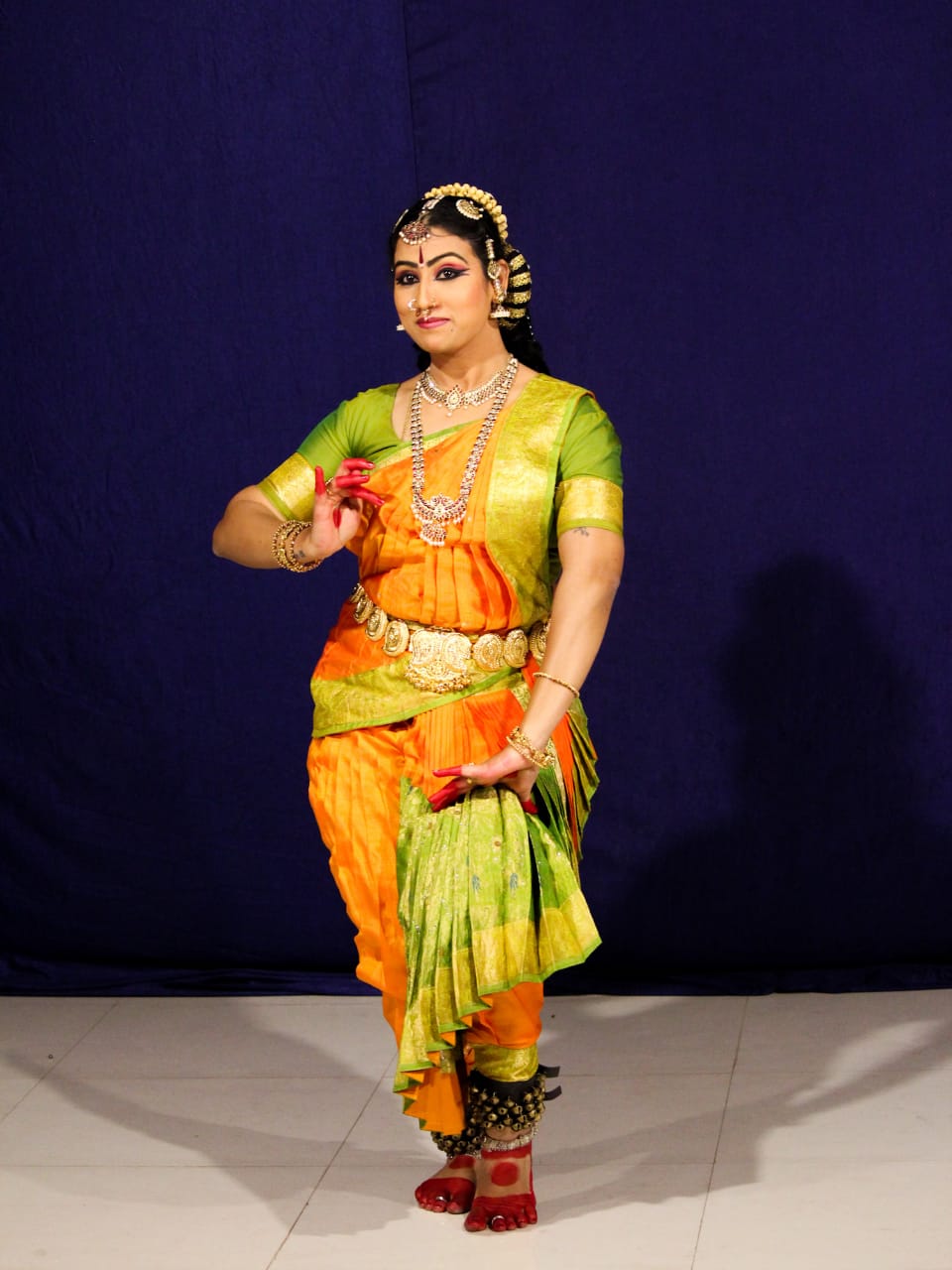
The ending piece was by Arun Sreenivasan, a Kṛti- Bhujangiṇi set to Ādi Tāḷa composed by Aṇṇamac̣hārya. The theme was the poet who is confused how to place Venkateshvara of Tirupati; he is amidst confusion and wonder. He wonders- how can a butter thief be called a Paramapuruṣa? The one, who is the father of Brahma, is also the son of Yashoda. The one, who is the essence of the Vedas, is a butter thief! The one, who is called the greatest among greats, is a cowherd with a bamboo flute. How is it possible for a common man to have his Darśana of the one who resides on the seven hills with a mere chant of his name, when the learned scholars chant hymns a hundred times and still not get- at least a glimpse. This state of wonder made the poet as the Sūtradhāra for the dancer.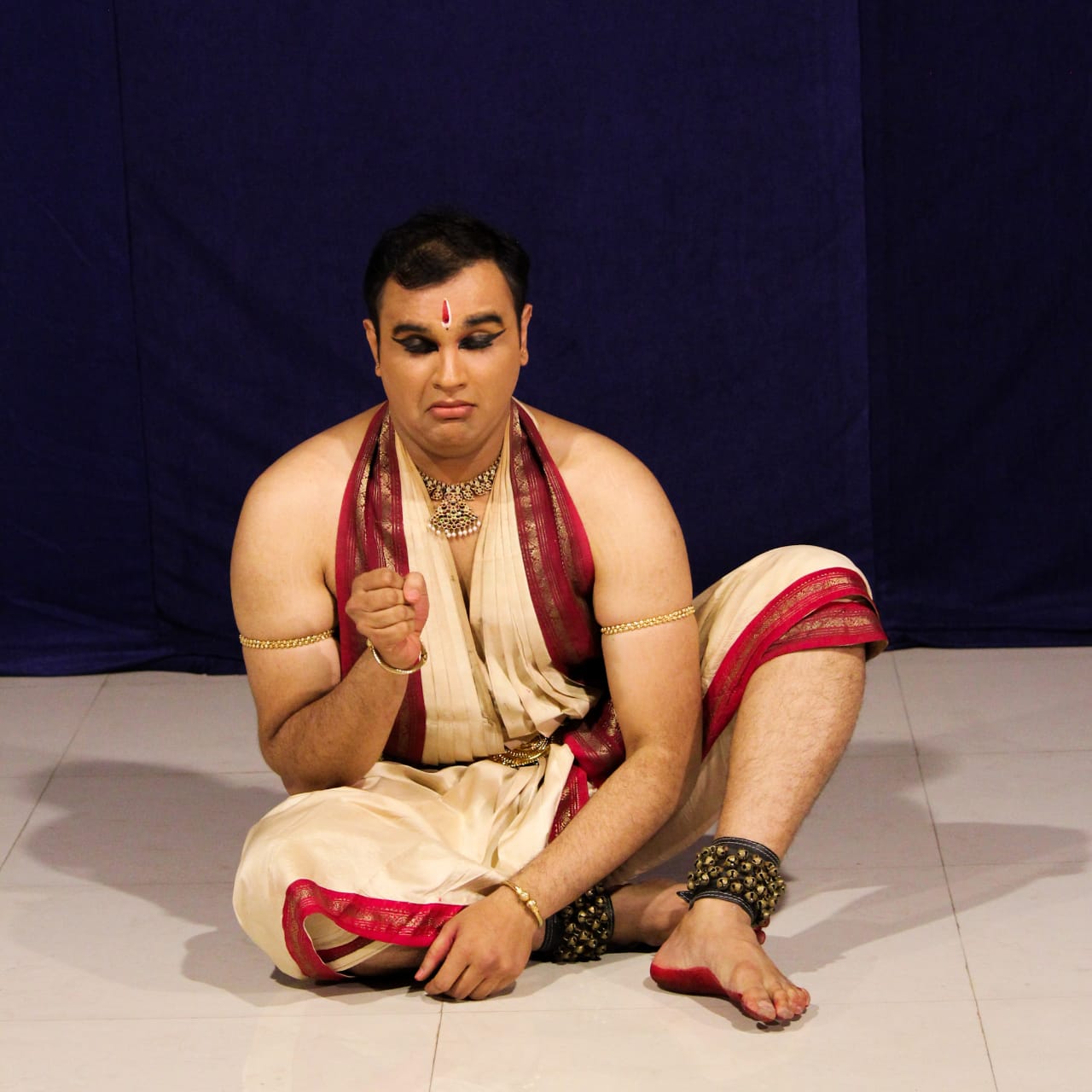
For the depiction of Paramapuruṣa, the choreography was the Sanc̣āri of the Kśīrasāgara Śayana. As the piece is more an outpour of Bhāva, the use of a deliberate Āṅgika was realised to be, rather silly. However, certain Karaṇa’s like Sarpitam to depict the Ādiśeṣa, Sūc̣ividdham to show Lakśmī, Kaṭibhrāntam to show the unveiling of Brahma through the Garbhā of Viṣnu, Krāntam for the actual creation and many relevant Karaṇa’s for the creations like Nāgāpasarpitam, Gajakrīditakam, Simhavikrīḍitam, Vidhyutbhrāntam, Viṣnukrāntam, Ākṣiptarec̣itam and Samanakham were used. Uromaṇḍalam to depict Sthiti of the world; later Āvartam and Maṇḍalasvastika to depict- ‘with a mere thought, the creations are taken back by Viṣnu, thus making him a literal Śeśa (residue after everything is destroyed) and primordial (Ādi). To depict the little Kṛṣna, Vṛsc̣ikam and Elakakrīḍita were used (with suitable Abhinaya Hasta). The use of the first verse of Puruṣasūkta when Viṣnu was shown to be sleeping on the snake added to the impact factor. Alātam Karaṇa to depict the Viṣnu to be the lord of the four Veda’s was used. The Sanc̣ari of Kṛṣna eating the mud and Yaśoda reacting was used to depict the mischievous Kṛṣna. This Kṛti was tuned by Sangeeta Kalanidhi Vid. Nedunuri Krishnamurthy; additional music for the Sanc̣āri’s by Vid. Nagashree Narayan.
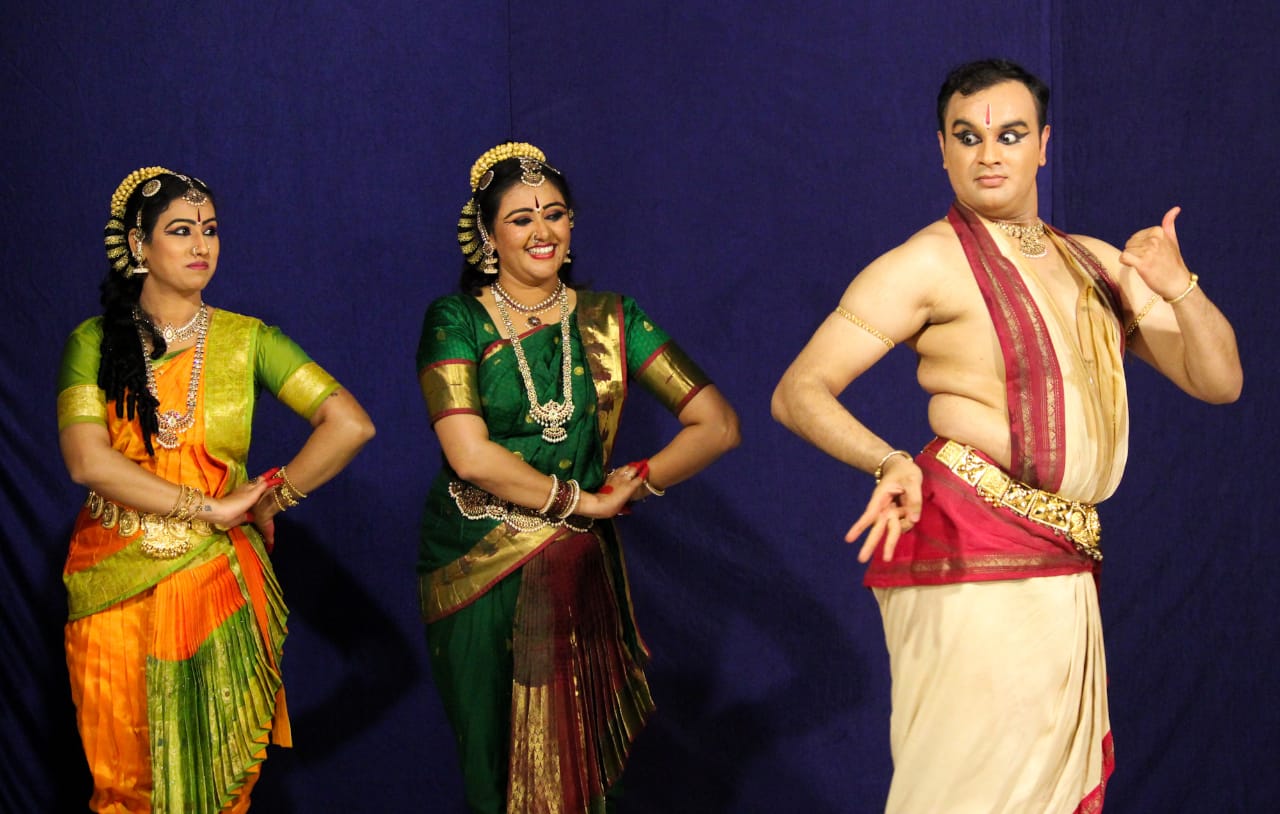 The presentation concluded with a Maṅgaḷa śloka, which was in a very lively manner. Arun and Co-dancers thanked and payed obscience to everyone by employing lokadharmi aspects of abhinaya. The entire presentation was Pṛtagārtha in nature.
The presentation concluded with a Maṅgaḷa śloka, which was in a very lively manner. Arun and Co-dancers thanked and payed obscience to everyone by employing lokadharmi aspects of abhinaya. The entire presentation was Pṛtagārtha in nature.
